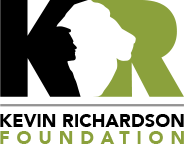into the wild: kevin in namibia…
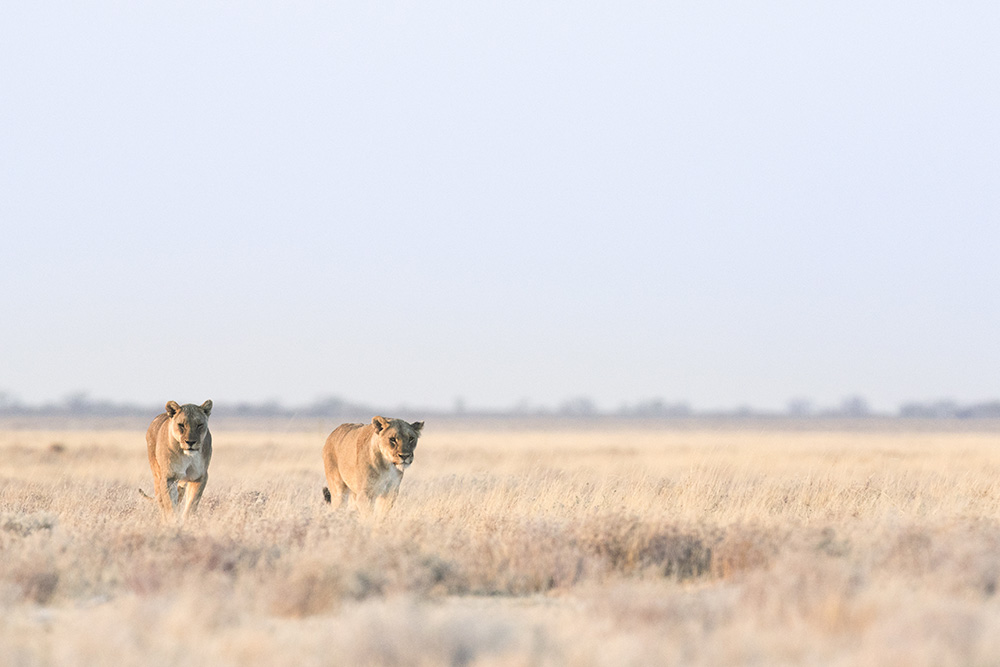
Livestock is precious for all desert-dwelling people, who depend on their goats or cows to survive. To lose even one goat or cow to a lion is a devastating blow. This is the story of human-wildlife conflict that many in the developed world don’t understand – to lose an animal to a lion can mean a real threat to a family’s livelihood.
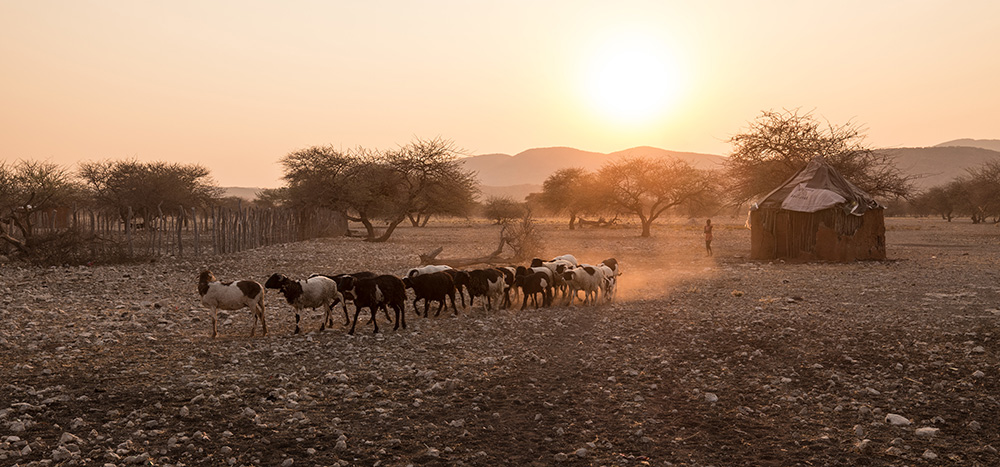
“Driving from the airport to the Hobatere concession, one realizes just how vast the spaces are in Namibia. It is obvious that it would be difficult to separate lion territory from human territory,” says Kevin.
“The trip began and ended with events that got me truly excited… seeing local children receiving a quality education and seeing lions in the wild,” Kevin recalls.
“These two things really go hand-in-hand,” explains Tammy Hoth, founder and manager of AfriCat North. “Without showing the local people the value that wildlife can bring to their community, it doesn’t make sense to expect them to take measures to protect something that is essentially a threat to their well-being.”

Kevin shows some herdsmen his life on camera
AfriCat North not only runs education and conservation programs for young people across the region, but they also build kraals (enclosures) for the cattle and goats so that, at night, the animals are protected from hunting lions. Surrounding these kraals are solar-powered “lion lights,” which flash in a way that confuses lions and deters them from breaking into the enclosure.
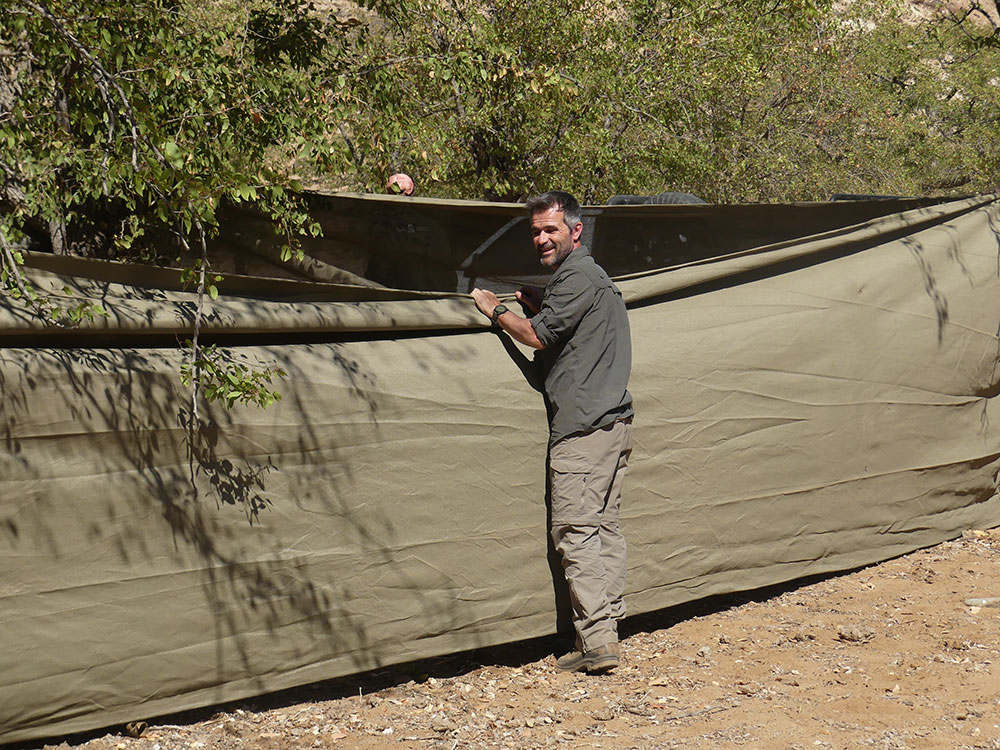
Photo Caption: AfriCat North doesn’t mess around. This work is demanding, and Tammy put Kevin to work erecting a mobile kraal (enclosure) — now a smart way to work, as bomas are moved in response to the drought.
On the last day of the trip, Kevin set out with AfriCat staff to track a very special lioness called Sidatia (pronounced Si – dut – ya) who had just given birth to cubs a few weeks prior. “Sidatia is wearing a collar provided by the Kevin Richardson Foundation,” Kevin explains. “Sedatia is collared so the lion guardians can monitor her movements, and we now have the added advantage of knowing where she is with her cubs. Seeing a real, wild lioness with her cubs is pretty much a holy moment for anyone these days.”
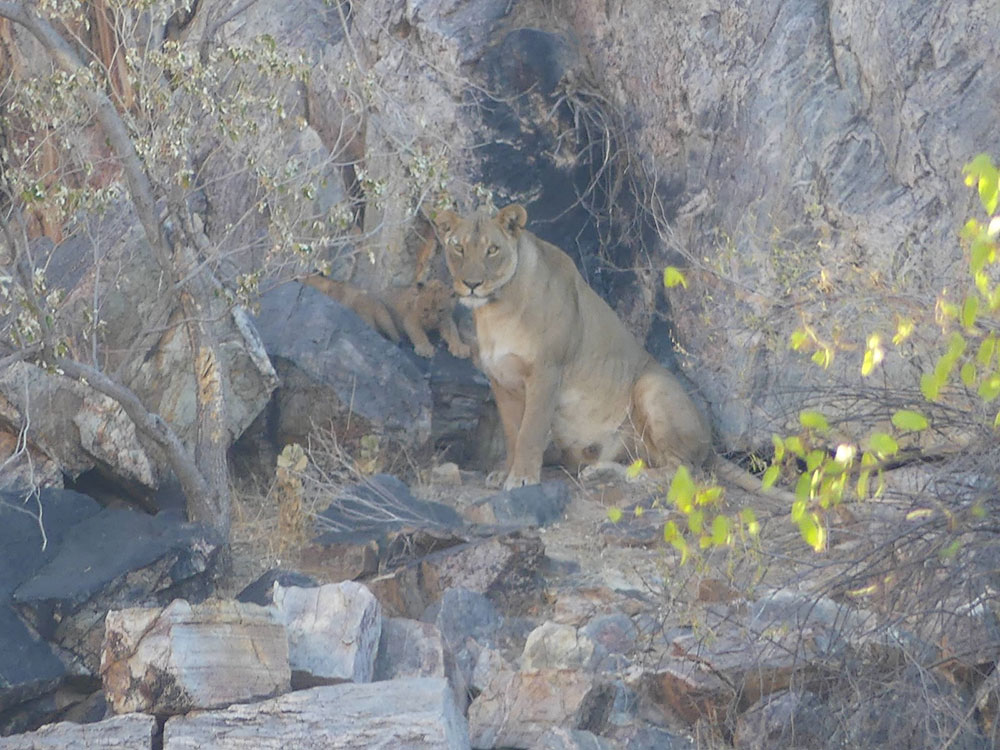
And so, from a secluded rocky outcrop on a small elevation in the Namibia desert, a young lioness mother and her sister anxiously care for three tiny cubs. Lion cubs in the wild live a fragile existence, with a mortality rate of between 50 and 70%. “She is doing a good job,” smiles Kevin. “Seeing her watch over her curious babies and keep them from wandering off was amazing to see. When you see the loving attention of a lioness with her babies in the wild, it’s a reminder that we have to fight to protect the beauty of nature, uninterrupted by man.”
To learn more about AfriCat and their work, follow them on Facebook.
